Today, we’re comparing the Adidas Adizero Prime X V1 with the second-generation model, the Adidas Adizero Prime X 2.0 Strung.
Version 2.0 is, of course, the second generation and newer of the two models, but the first version of the shoe is still widely available, hence the comparison is relevant, particularly as I feel the two shoes are really quite different.
| Adizero Prime X V1 | Adizero Prime X 2.0 Strung |
| Weight: 251g / 8.85oz | Weight: 295g |
| Heel Stack: 49.5mm | Heel Stack: 50mm |
| Forefoot Stack: 41mm | Forefoot Stack: 43.5mm |
| Drop: 8.5mm | Drop: 6.5mm |
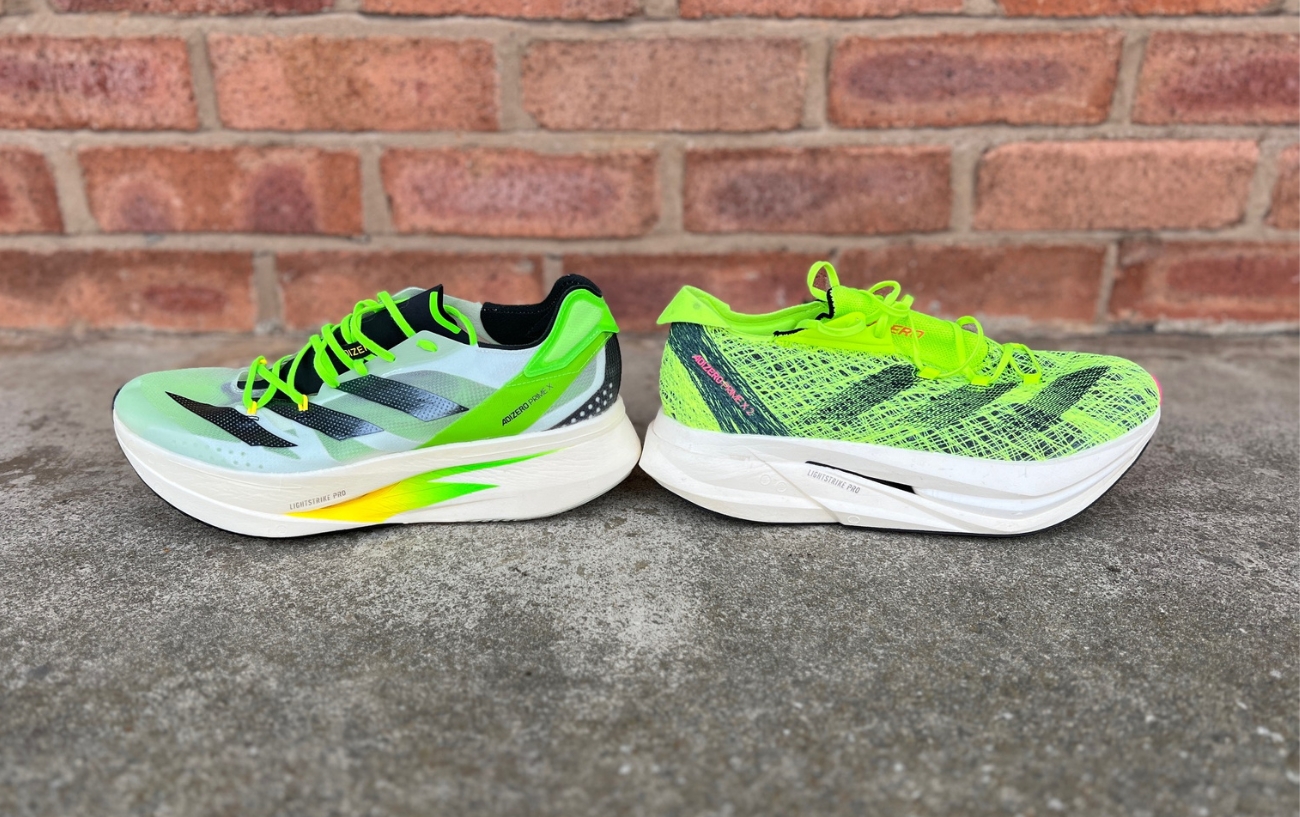
Adidas Prime X V1 VS. Prime X 2.0 Strung – The Uppers:
Prime X Version 1
One obvious difference between the two models is the upper construction.
That said the original version of the shoe is available in both ‘regular’ and Strung versions.
The standard version uses a lightweight single-layer mesh design that’s strong and durable but also lightweight and breathable.
The tongue is a single layer held in place with a small section of stitching about halfway up the instep of the foot.
The heel is again a lightweight and simply constructed design. There is no padding, just a reinforced suede-like material to line the ankle collar.
The Achilles area of the shoe does feature a rather prominent design that, in my opinion, could potentially cause irritation to some runners. This heel tab serves no real purpose or benefit and would have been better left off the shoe.
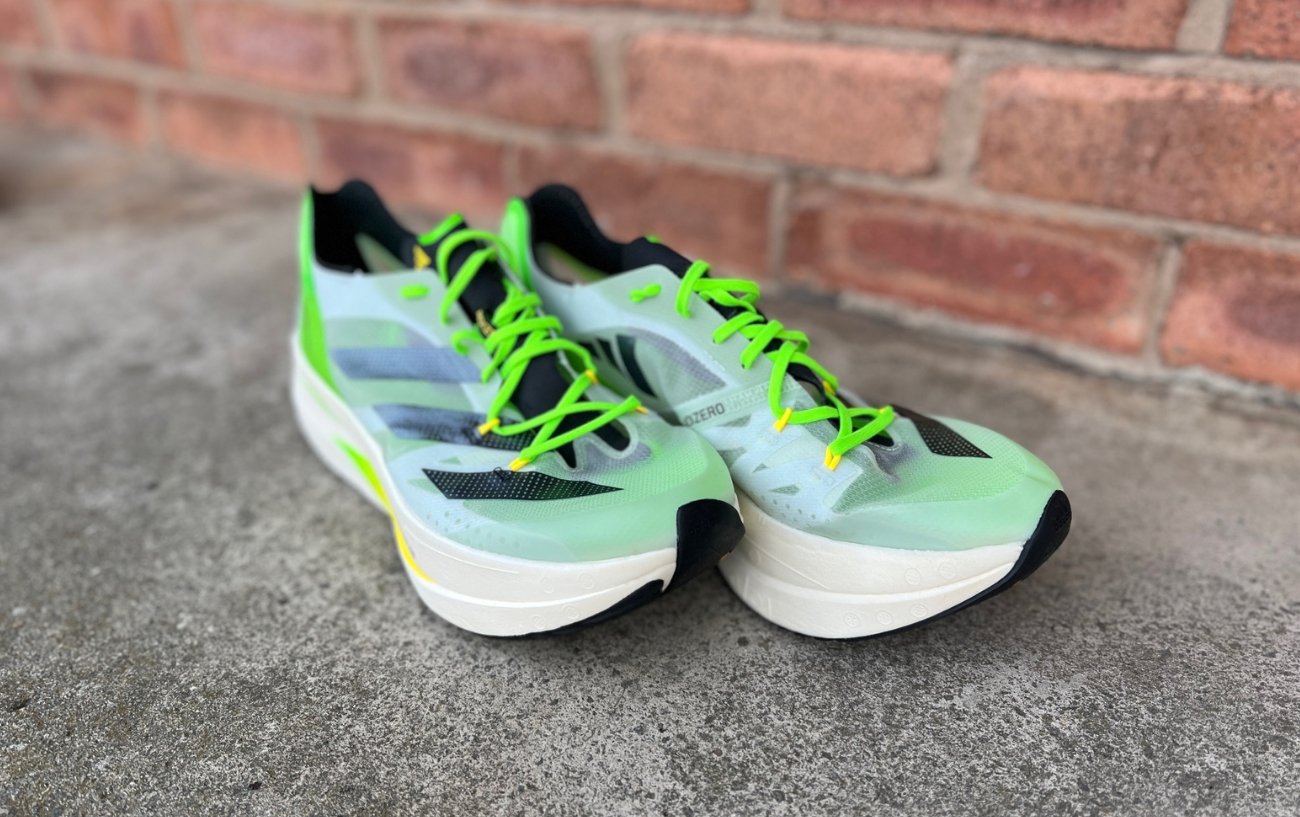
Prime X Version 2.0 Strung
The strung upper is a carefully crafted design with yarns interwoven and layered together to strengthen and support the foot where it counts most.
The yarns are closer together to create strength and are more widely spaced to allow flexibility.
The tongue uses a knitted stretch section as part of the one-piece upper. This can make getting into the shoe a two-handed affair as you’ll need to stretch open the shoe in order to get your foot inside.
Again, the ankle collar and Achilles have minimal padding, but here, the Achilles area of the shoe is much neater and should reduce the chance of any irritation significantly.
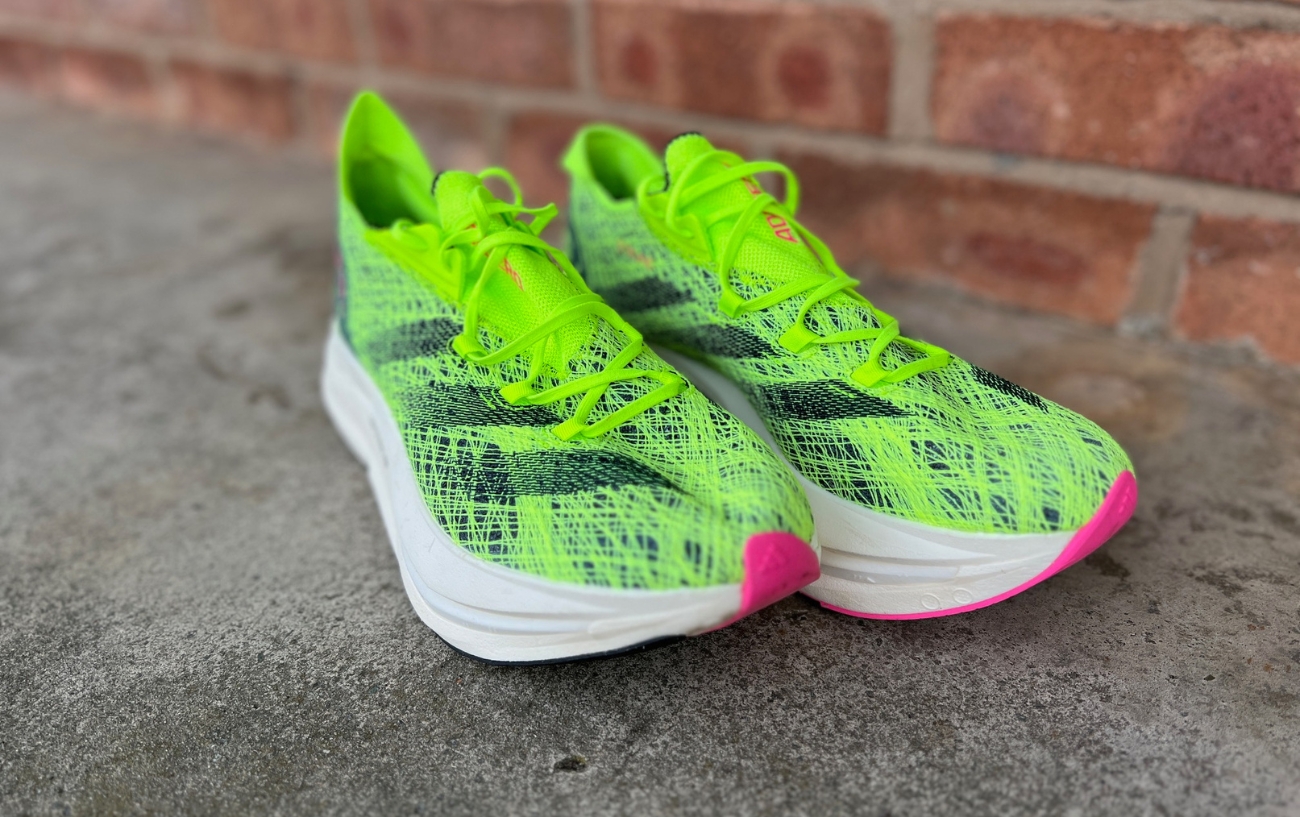
Adidas Prime X V1 VS. Prime X 2.0 Strung: The Midsole
Prime X Version 1
With a total stack height of 49.5mm, the V1 isn’t short of cushioning. A dual-layer construction of Lightstrike Pro foam sandwiches the brand’s Carbon-infused Energy Rod technology.
Lightstrike Pro is a soft foam material with great ‘energy return’ properties. It offers a very responsive feel and compares well with other ‘super foams’ such as PEBAX.
I find the Energy Rods to offer a smooth toe-off rather than a ‘springy’ one of some carbon racers.
That’s no bad thing and being fortunate enough to have a few carbon-plated racing shoes to choose from simply means I have more options, each offering subtle variations on race day.
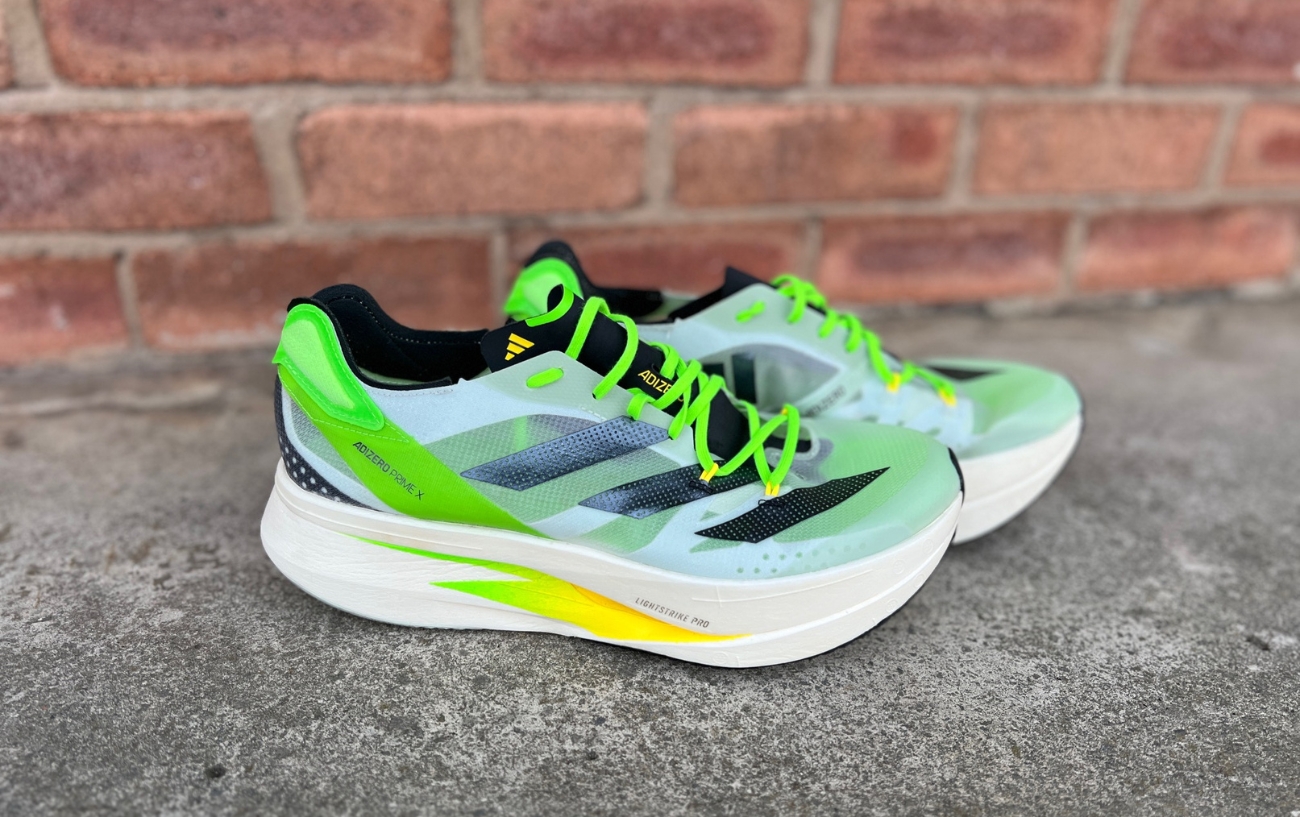
Prime X Version 2.0 Strung
With a very slightly higher stack of 50mm in the heel, the V2.0 uses 3 layers of Lightstrike Pro foam to allow 2 carbon-infused plates to be used, with an energy core sitting between the plates.
The v2.0 is a little heavier and the twin plates must contribute to this weight, as will the higher stack of foam in the forefoot. Up front, the shoe measures 43.6mm, so holds an extra 2.5mm of cushioning.
Running in the two models I’d contribute much of the stability of the newer model to the carbon plates. They reduce lateral movement considerably, particularly in the forefoot and as the foot rolls from the midfoot to toe-off.
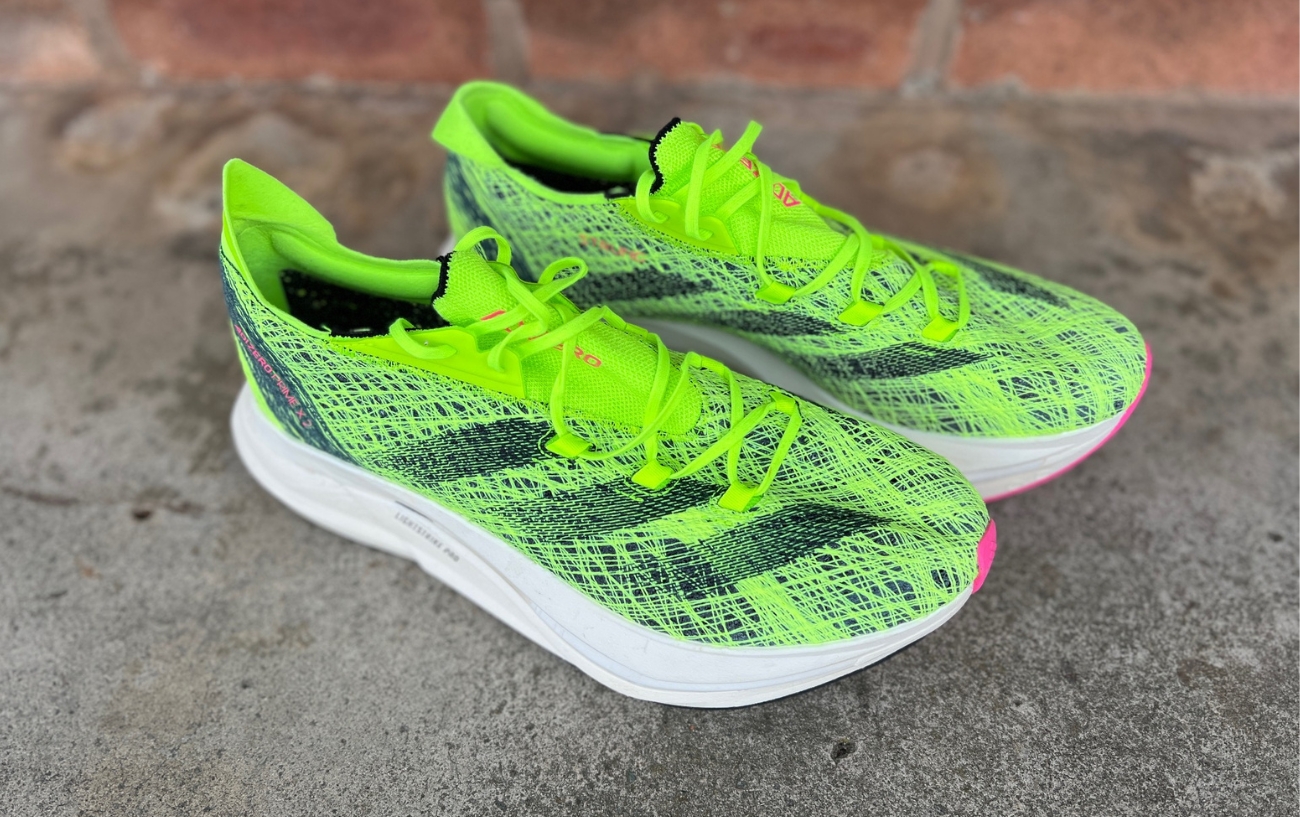
Adidas Prime X V1 VS. Prime X 2.0 Strung: The Sole
Both the V1 and 2.0 use Continental rubber on the outsole. It’s great to see the outsole coverage extends to almost 100% of the shoe.
Often brands aim to reduce weight by leaving large areas of exposed, easily worn foam. Here the heel and forefoot have great coverage.
In the V1 the forefoot section of Continental rubber has a low-profile ribbed pattern to it. In the V2.0 the rubber is totally smooth.
To be perfectly honest, having run in both shoes in both wet and dry conditions I’ve found little to no noticeable difference in the two!

Adidas Prime X V1 VS. Prime X 2.0 Strung: The Weight
Prime X Version 1
When it comes to racing shoes, legal or otherwise, weight is a critical consideration and it’s here that the extra carbon plate and increased cushioning of the V2.0 pays the price. It’s almost 50g heavier than V1 and it is noticeable.
The V1 comes in at 251g or 8.85ox.
Prime X Version 2.0 Strung
The shoe feels noticeably heavier, and with that, it almost takes a little more effort to get it moving and maximize its benefits.
The V2 Strung comes in at 295g or 10.4oz.
Of the two max cushioned racers, the first version feels lighter on the foot and, even with the big 50mm stack, less bulky.
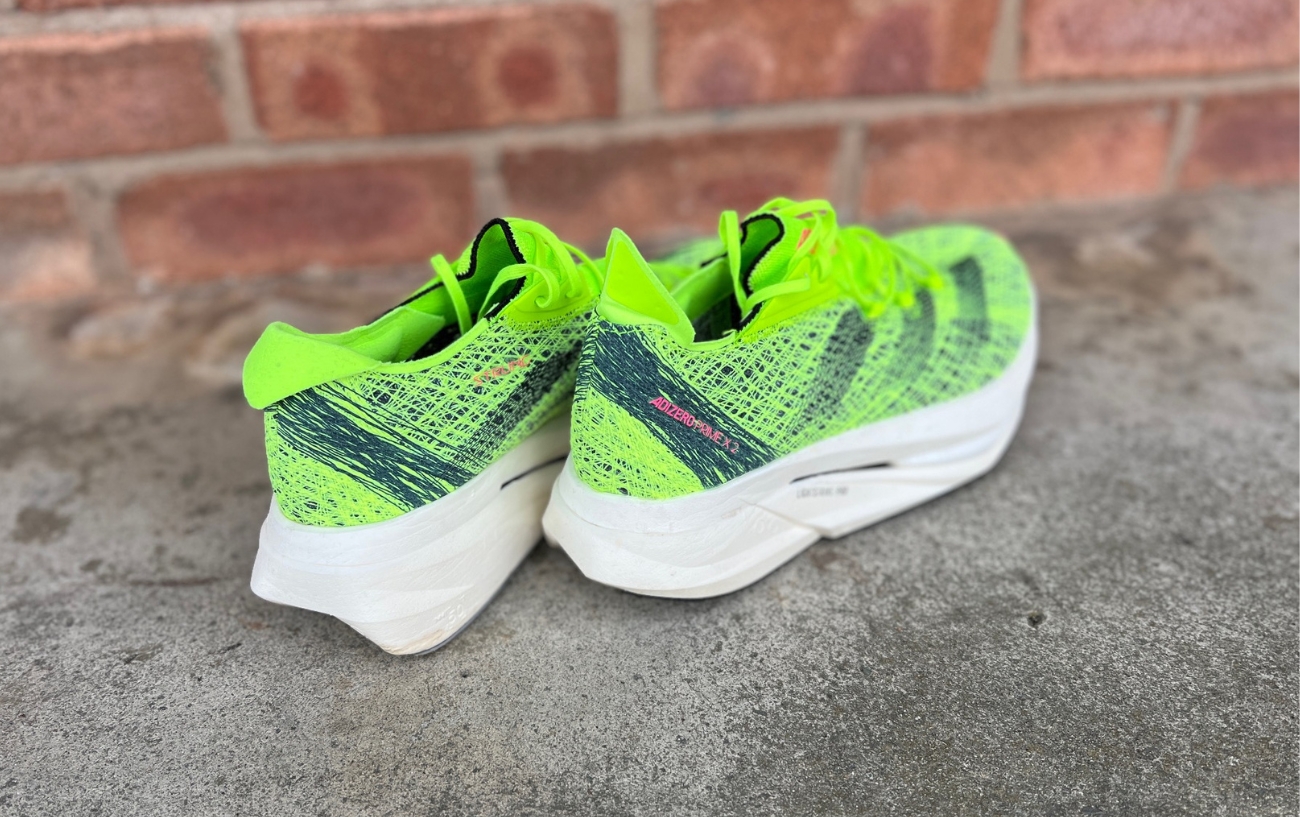
Adidas Prime X V1 VS. Prime X 2.0 Strung: Fit
Prime X Version 1
Both versions fit well and as previously mentioned with regards to the upper, above, it comes down to personal preference ultimately.
The more ‘normal’ upper of the first version is light and breathable, if a little over-engineered. The heel is an area of potential irritation, but for me, it wasn’t a concern.
Prime X Version 2.0 Strung
The Strung upper is again very light and fits well. Depending on the volume of your feet, the toe box area could be a little baggy and liable to crease across the width of the foot. I solved this issue with more careful tightening of the laces.
The heel area is a neater, less intrusive shape. The tongue is knitted and fully stitched into place to create a one-piece design.
This design makes for a good fit but does mean the shoe needs a little bit of effort to get inside. It’s a two-handed job to stretch open the shoe and get your feet in.
Ultimately the difference here will purely be personal preference and a draw in this area.
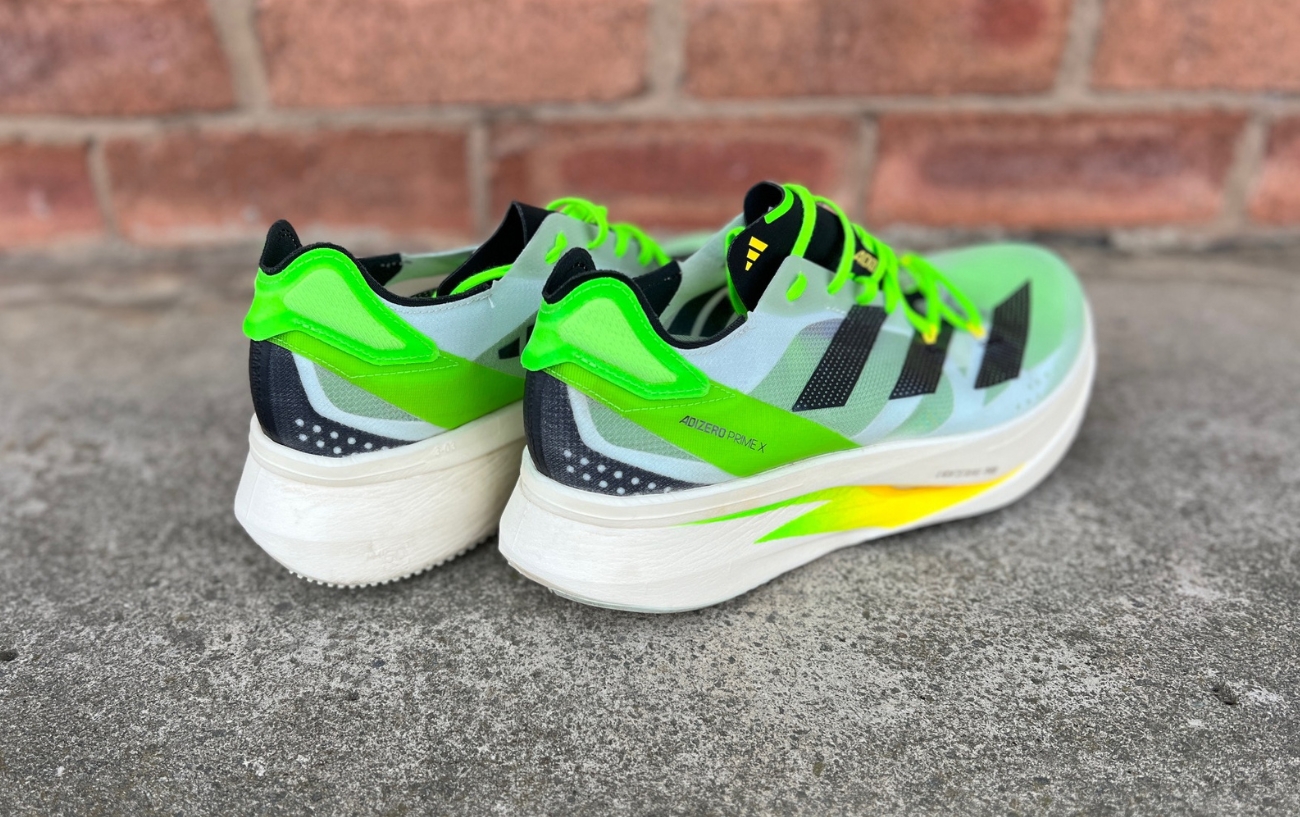
Adidas Prime X V1 VS. Prime X 2.0 Strung: Stability
Whilst neither of these shoes offers anything considerable in terms of stability, it’s the second-generation model that is certainly the more stable of the two.
The wider base of the shoe measures around 5mm broader in both the heel and forefoot and without the sculpted midfoot cutaway of the V1 the newer model suffers less midfoot flex.
The twin carbon-infused plates rather than the rods also play a large part in increasing the torsional rigidity.
Both shoes feature tapered lateral heel area and this aims to keep the foot supinated a little longer on impact. It works to some extent, but with that high stack and soft midsole it also tends to exaggerate any inefficiencies in your gait.

Adidas Prime X V1 VS. Prime X 2.0 Strung: On the run
I really enjoyed running in both of these shoes and after several runs in each can make a case for each of them.
The first version, while unstable is lighter and a little more flexible, making it easier to get up to speed in. It’s easier to be able to push off harder and attack the road.
The second-generation model is heavier and bulkier. It feels more of a shoe on the foot and with that, it takes a little more effort to get it moving. It’s more stable but also stiffer.
That said, once up to speed the stability helps and it feels great. I definitely feel that you need to adjust your stride a little in the V2.0 in order to get the best from it.
By adopting a slight forward lean and aiming for a more midfoot ground contact the shoe comes alive and feels more responsive and propulsive. But being perfectly honest, I couldn’t maintain this stride for more than about a mile. It seemed a little unnatural and did take both concentration of extra effort.
Of course, like all shoes, some people naturally have this running gait and for them, they’ll maximize the shoe and it will reward them with great dividends.

Which is best?
It’s very close, so to quantify, I’ll give the benefits of both here, and you can decide.
| Adizero Prime X | Adizero Prime X 2.0 Strung |
| Lighter | A little too heavy |
| Less Stable | More stable |
| More flexible | Requires a little effort to get up to speed |
| More natural feel (for a 50mm stack!) | Suits a midfoot striker |
| More Responsive | More aggressive feel |
| Can be found at a lower price | Long distance cuiser |



